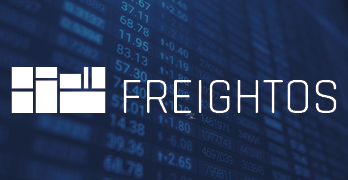FBX Index August: Market Summary

The Freightos Baltic Global index fell 8% to $5,682/FEU in August as demand continues to slow. As prices this time last year were nearly at their September peak, the current rate is 45% lower than its level a year ago, although still nearly quadruple the pre-pandemic norm.
Asia - US West Coast prices fell 18% in August to $5,405/FEU, the lowest level since March 2021. This rate is more than 70% lower than last August when prices were approaching their record high of more than $20K set in early September.
Asia - US West Coast prices fell 18% in August to $5,405/FEU, the lowest level since March 2021. This rate is more than 70% lower than last August when prices were approaching their record high of more than $20K set in early September.
As the decrease continues, in dollar terms the slide was similar to last month’s and slow compared to the 50% and nearly $8,000/FEU drop from May through June. Despite West Coast congestion improving it is still a contributor – along with volumes that despite the decrease in demand are still higher than in 2019 – to rates that remain more than 4 times their level in August 2019.
Worsening congestion on the US East Coast may help explain why the transpacific rate dropped on this lane and has not been as steep as the West Coast price decrease. Asia - US East Coast rates fell 12% to $9,073/FEU, and are 55% lower than last August. However, they are “only” 45% lower than at the start of the year compared to a 63% drop for the West Coast. Prices are about 3.5 times higher than in August 2019.
Asia - Europe rates were stable in August, ticking up 3% to $9,929/FEU, 28% lower than a year ago but nearly 7 times higher than its 2019 level. Prices are 31% below their level at the start of this year but the bulk of that fall took place from February through April, with rates fairly level since May.
Asia - Europe rates were stable in August, ticking up 3% to $9,929/FEU, 28% lower than a year ago but nearly 7 times higher than its 2019 level. Prices are 31% below their level at the start of this year but the bulk of that fall took place from February through April, with rates fairly level since May.
Severe congestion is the main driver of the persistent rate elevation relative to the norm even with the decreases seen this year. Poor schedule reliability as well as labour shortages have kept congestion a major problem for European hubs despite falling volumes. Labour disputes also continue to cause disruptions and delays, with the recent port worker strike in the UK the latest and potentially biggest example.
About Judah Levine, Research Lead, Freightos
Judah is an experienced market research manager, using data-driven analytics to deliver market-based insights. Judah produces the Freightos Group's FBX Weekly Freight Update and other research on what's happening in the industry from shipper behaviors to the latest in logistics technology and digitization.
Receive monthly container market reports direct to your inbox.